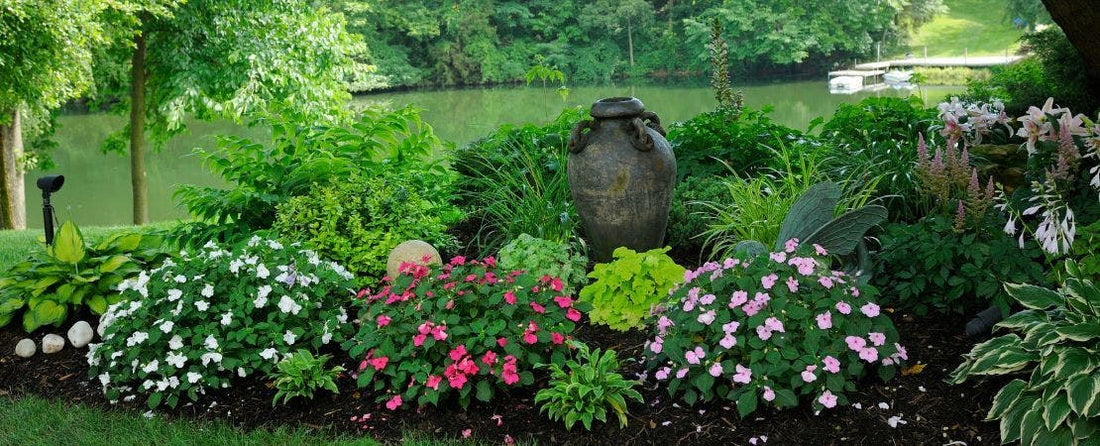Grow a Shade Garden: 5 Plant Recommendations and 2 Styling Tips

Embrace the Shade: A Guide for What to Grow in Shady Gardens
Many popular perennials require full sun (6 hours or more of sun per day) to look their best. But with the right knowledge and plant selection, you can transform shady spaces into lush, green–and often flowering–retreats. Many plants not only tolerate shade but thrive in it. However, understanding the different levels of shade and how they affect plant growth is crucial. Read on for perennial plant recommendations for varying shade levels and how sunlight influences their blooming. Keep in mind where you live and the intensity of the sun can impact these guidelines.
Understanding Shade Levels
While the chart may be familiar for levels of sun, there are levels of shade to consider too.
- Full Shade: Less than 4 hours of direct sunlight daily, preferably in the morning.
- Partial Shade (or Semi-shade): About 3-6 hours of morning or early afternoon light.
- Dappled Shade: Sunlight filters through mature trees, creating a shifting light pattern.
Plant Recommendations and Their Shade Tolerance
1. Hostas:
- Shade Tolerance: Thrive in partial to full shade.
- Sunlight and Blooming: While primarily grown for their foliage, hostas do produce lily-like flowers. Some varieties might bloom better with a few hours of morning sun, but excessive sunlight can scorch their leaves.
2. Ferns:
- Shade Tolerance: Most ferns prefer dappled to full shade.
- Sunlight and Blooming: Ferns are non-flowering plants, so blooming isn't a concern. However, some sunlight can enhance their frond coloration.
3. Astilbe:
- Shade Tolerance: Best in partial shade but can tolerate full shade.
- Sunlight and Blooming: While they can grow in deep shade, astilbes will produce more vibrant and abundant plumes with a bit of morning or early afternoon sun.
4. Bleeding Heart (Dicentra):
- Shade Tolerance: Prefers partial to full shade.
- Sunlight and Blooming: They bloom best with some morning sun but need afternoon shade to prevent wilting.
5. Impatiens:
- Shade Tolerance: Thrive in partial to full shade.
- Sunlight and Blooming: While they're known as shade lovers, a couple of hours of morning sun can enhance their flower production.
Garden Styling Tips for Shady Gardens
Some garden styles lend themselves naturally to a shade garden. Here are two of our favorites.
Woodland Garden: Mimic the natural setting of a forest floor using ferns, hostas, and astilbes. Intersperse them with stepping stones and maybe a rustic wooden bench to evoke a serene woodland feel.
Romantic Retreat: Aim for a soft, dreamy aesthetic with bleeding hearts, impatiens, and astilbes. Consider adding a white wrought-iron bench or swing, surrounded by these blooming beauties.
Successful shade gardens require certain plants to thrive. It's entirely possible to cultivate a vibrant, serene garden in low-light conditions, though. By understanding the specific needs and preferences of shade-loving plants, you can ensure a beautiful display. Remember, sometimes it's not about how much sun you get, but what plants you add in the shade that counts.



